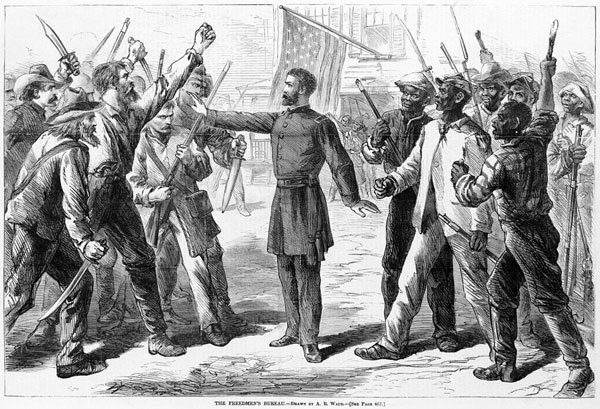
January 14, 2018; Washington Post
A recent article in the Washington Post discussed a curriculum designed to help history teachers explore the post-Civil War era of Reconstruction with their students. What interests us about the article is not just the topic, but the nonprofits behind it.
Michigan teacher James Gorman, watching on television as white supremacists marched at the University of Virginia, decided his students should learn about similar events that took place 150 years ago. To do so, he turned to a tool called Teach Reconstruction, a curriculum developed by the Zinn Education Project. The curriculum provides accounts of how politicians made decisions, helps students see the impact of these decisions on the country, and shows some parallels with our society today.
The Zinn Education Project is a collaboration between two nonprofit organizations that promote ways to teach social justice and equity through education. Based on the approach to history Howard Zinn used in his People’s History of the United States, the Zinn Education Project “promotes and supports the teaching of people’s history in middle and high school classrooms across the country.” The premise is to show that by looking at how history is about people’s choices and actions, rather than emphasizing names and dates, students can better see the potential impact of their own actions and choices.
Sign up for our free newsletters
Subscribe to NPQ's newsletters to have our top stories delivered directly to your inbox.
By signing up, you agree to our privacy policy and terms of use, and to receive messages from NPQ and our partners.
The nonprofits collaborating to create the Zinn Education Project are Rethinking Schools in Wisconsin and Teaching for Change in Washington, DC. Both of these organizations are outside the education system, but they share a joint belief that public education can be improved and that schools are a great place to help students become great citizens and create a caring, equitable society. The education reform they seek is not about tearing down public schools, as can be the case with the charter school movement, but about building it up, helping teachers and their students have the tools they need to question and examine the world around them.
Rethinking Schools was created by teachers who had a vision of an education system that went beyond “basal readers, standardized testing, and textbook-dominated curriculum.” Teaching for Change has a 25-year history of “Building social justice starting in the classroom.” Both programs publish regular newsletters, and they each provide a variety of resources, tools, and approaches for educators and families. Both use the non-Eurocentric approach embodied in Teach Reconstruction and the Zinn Education Project: looking at the world through the lens of the full diversity of our nation’s people.
Finally, it’s worth noting that the Washington Post article was produced by the Hechinger Report. In describing its mission, Hechinger says, “We cover inequality and innovation in education with in-depth journalism that uses research, data and stories from classrooms and campuses to show the public how education can be improved and why it matters.” Hechinger is an independent nonprofit that seeks to find and share truths about education in our country, examining both the many real problems facing education, as well as the evidence regarding efforts to reform it.
The Hechinger Report, Teaching for Change, Rethinking Schools, and the Zinn Education Project are examples of nonprofit organizations rolling up their sleeves and providing real information and solutions to improve our education system. The first does it by giving a clear understanding of what’s happening—much like NPQ does for the nonprofit sector—and the others offer new ways to approach the curriculum.—Rob Meiksins












